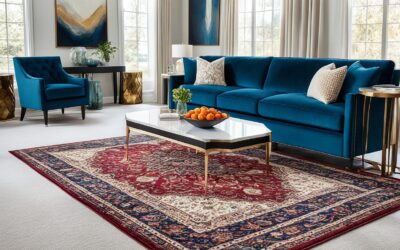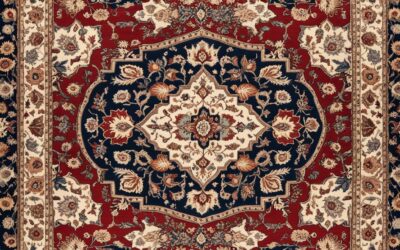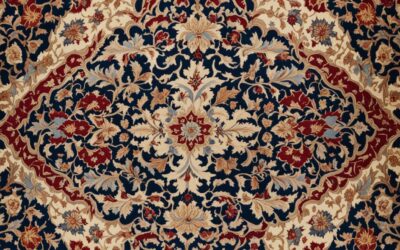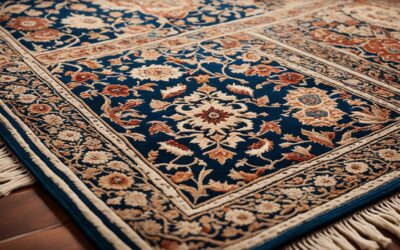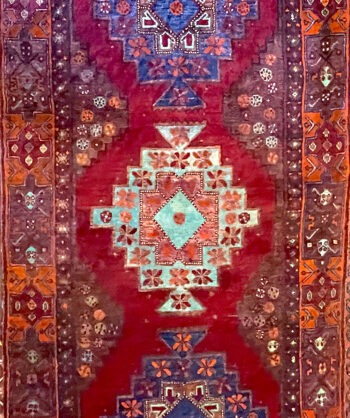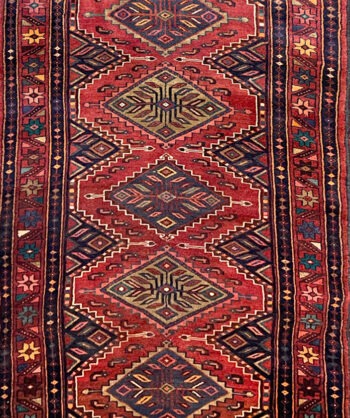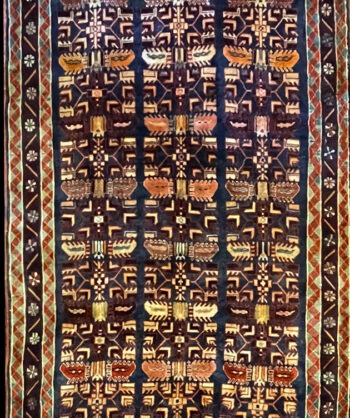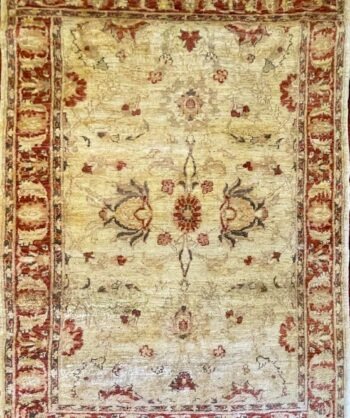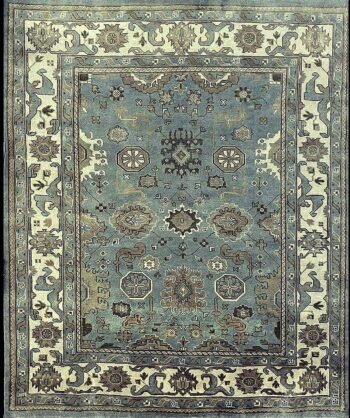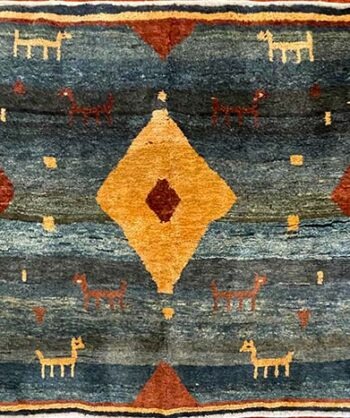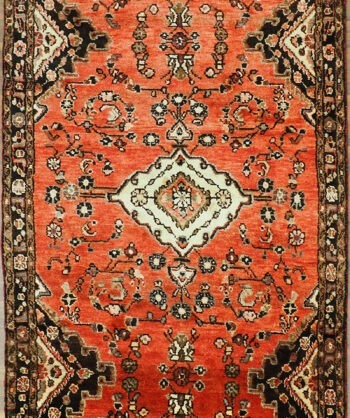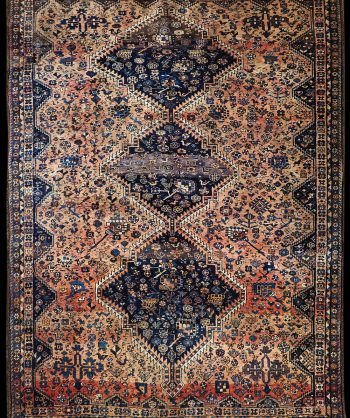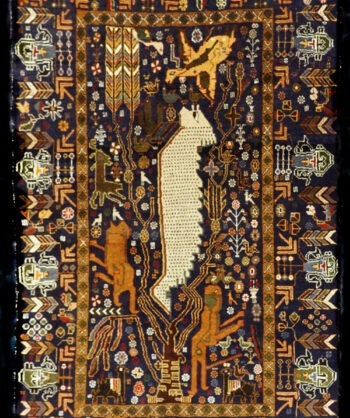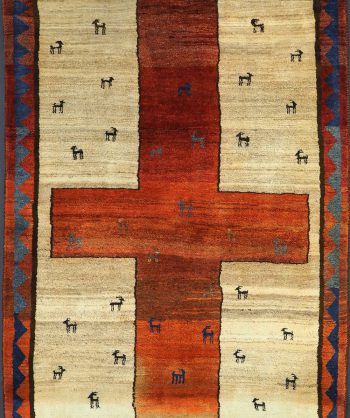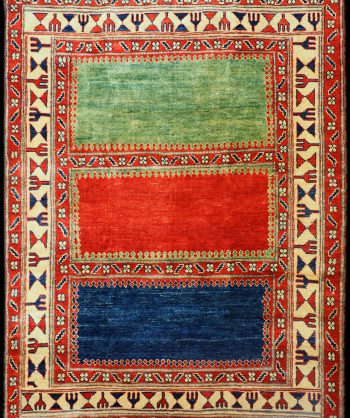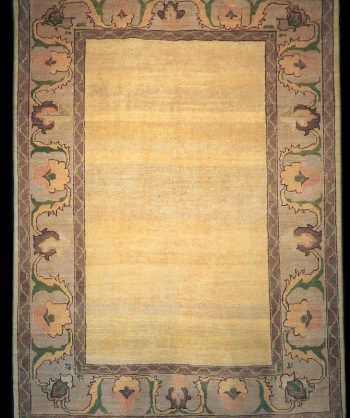Table of Contents
Many people think “Persian Rug” and “Oriental Rug” mean the same thing. But they don’t. “Oriental Rug” is a wide term for any hand-knotted rug from Asia. “Persian Rug” is a type of Oriental Rug from Persia, now known as Iran.
Even though they look similar, there are big differences between them. It’s good to know these differences.
Key Takeaways
- Persian Rugs are a specific type of Oriental Rug originating from Persia (Iran).
- Oriental Rugs is a broader category that includes hand-knotted rugs made throughout Asia.
- Persian Rugs are known for their unique knot, intricate designs, and high-quality materials like wool and silk.
- Oriental Rugs can vary significantly in their designs, knotting techniques, and materials used.
- Understanding the differences between Persian and Oriental Rugs is crucial for making an informed purchase decision.
Introduction to Persian and Oriental Rugs
The world of hand-knotted carpets is full of culture, beauty, and tradition. At the center are the amazing oriental rugs and the famous Persian rugs. Let’s explore the interesting differences between these two art forms.
What is an Oriental Rug?
An oriental rug comes from Asia and is made by hand. Countries like China, India, Russia, Turkey, Pakistan, and Tibet make these rugs. They have been made for many years, each place adding its own style.
These hand-knotted carpets are known for their Turkish (or Ghiordes) Knot. This knot is a big part of their detailed designs.
What is a Persian Rug?
A Persian rug comes from Iran, where it has a long history. Making Persian rugs is a big part of Iran’s culture. They keep the old ways of making rugs alive.
The special thing about Persian rugs is the Persian Knot. This knot lets them make very detailed and beautiful rugs.
“The beauty of a hand-knotted rug lies not just in its intricate patterns, but in the stories it carries from the hands that crafted it.”
Persian Rugs vs Oriental Rugs: Key Distinctions
Persian and Oriental rugs have many differences in design, how they are made, and the materials used. These differences make each rug style special and unique.
Design and Motifs
Persian rugs often have designs that reflect their city of origin. They feature symmetrical patterns and central medallions. Oriental rugs have more curved designs with flowers and animals. They also show landscapes like mountains and lakes.
Persian rugs use warm colors, while Oriental rugs use contrasting colors to highlight texture.
Knotting Techniques
Both types of rugs are made by hand on looms. But they use different knots. Oriental rugs have small knots and are very dense. They use the Ghiordes knot.
Persian rugs have more knots and use the Senneh knot.
Materials Used
Persian rugs are made from sheep wool, camel hair, and sometimes cotton. Oriental rugs can be made from silk, wool, cotton, and more.
These differences in design, making, and materials make Persian and Oriental rugs special. They are highly valued and sought after for any home or space.
Persian Rugs vs Oriental Rugs
Persian rugs are a type of Oriental rug, but they stand out because of their popularity and unique features. They come from Iran and are known for their detailed designs and quality. Both Persian and Oriental rugs are loved for their beauty, skillful making, and deep cultural meaning.
Persian rugs are famous for their detailed flower patterns and strong colors. They use the Persian knot, making the rug’s pile thick and strong. Oriental rugs, on the other hand, have many styles from different places like China, India, and Turkey. They also have various knotting ways.
Both Persian and Oriental rugs are top-quality, focusing on skill and detail. The rug origins and rug styles affect their value and appeal.
“The beauty of a Persian rug lies not only in its intricate patterns but also in the rich history and culture it embodies.”
Choosing between a Persian and an Oriental rug depends on what you like, your budget, and the design you want. Both give a special look into the world of fine handmade textiles.
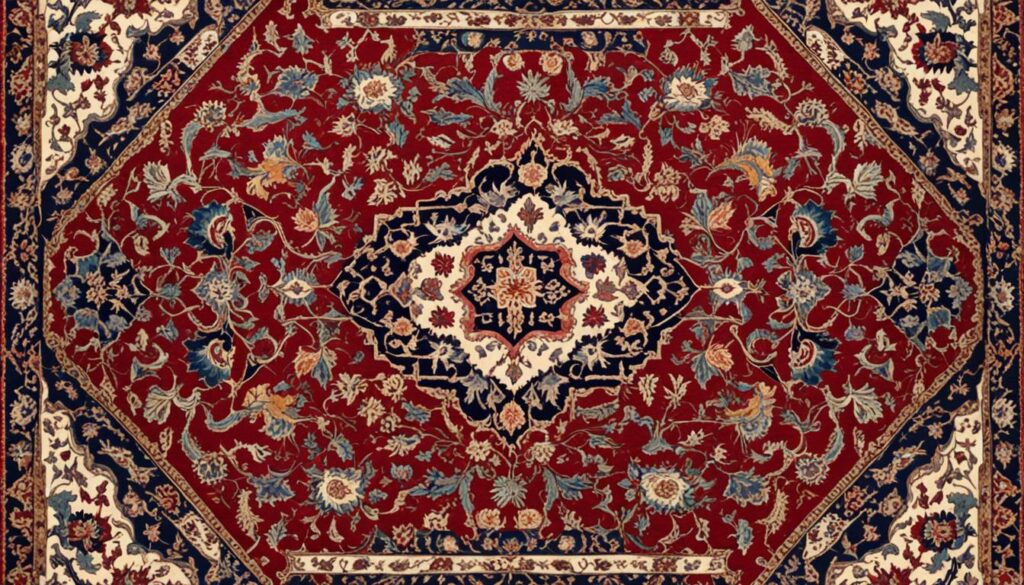
Construction and Knot Count
In the world of hand-knotted rugs, the choice of knotting technique is key. It affects the look and quality of the rug. This is clear when looking at Persian rugs and Oriental rugs made outside Persia.
Persian Knot
Persian rugs are famous for their Persian knot. This knot lets for detailed patterns and designs. With up to 500 knots per square inch, they are known for their high quality and skill.
Turkish (Ghiordes) Knot
Oriental rugs often use the Turkish, or Ghiordes, knot. This knot gives a unique look and feel. It’s different from the Persian knot.
The type of knot used affects how Persian rugs and Oriental rugs look. The knot density and knot count are key to their construction and look.
Care and Maintenance Tips
Looking after your oriental and Persian rugs is important. You need to avoid sun damage and clean them regularly. These steps will help keep your rugs looking great for a long time.
Avoiding Sun Damage
Sunlight can harm hand-knotted rugs. It makes them fade and the fibers break easily. Rugs in sunlight need watchful eyes. Sometimes, you might need professional cleaning to stop rug fading.
Regular Rotation and Cleaning
Turn and flip your oriental and Persian rugs often to prevent uneven wear. Clean them gently with a vacuum or a soft brush. This keeps them clean and stops them from wearing out too fast. Don’t beat or shake the rugs.
Professional Cleaning Services
Getting your rugs professionally cleaned now and then is a must. Experts know how to clean deeply without harming your rugs. This keeps your oriental and Persian rugs looking good for years.
“Regular care and maintenance is key to preserving the beauty and longevity of your prized oriental or Persian rug.”
Conclusion
Persian rugs and Oriental rugs are loved for their detailed designs and skilled making. They share some traits but have unique qualities. Persian rugs stand out with their special knotting and designs.
These rugs need the right care to last a long time. This includes getting them professionally cleaned.
Persian rugs and Oriental rugs are more than just pretty pieces for your home. They are valuable and show off the art of their makers. Knowing the differences helps you pick the right one for your space.
Whether you like the bright colors of a Persian rug or the classic look of an Oriental rug, take good care of it. This will keep it looking great for years.
Persian rugs and Oriental rugs are not just for walking on. They are art that tells stories of the places they come from. By taking care of them, you add history and beauty to your home.
FAQ
What is the difference between a Persian Rug and an Oriental Rug?
Persian Rugs are a type of Oriental Rug. Oriental Rugs are hand-knotted rugs from Asia. Persian Rugs come from Iran and have a special knotting method.
What are the key design differences between Persian and Oriental Rugs?
Persian Rugs have symmetrical patterns and warm colors. They often have a central medallion. Oriental Rugs have curvy designs with animals and landscapes. They use contrasting colors to highlight texture.
How do the knotting techniques differ between Persian and Oriental Rugs?
Persian Rugs use an asymmetrical knot. Oriental Rugs use a symmetrical knot. The Persian Knot lets for detailed patterns.
What are the common materials used in Persian and Oriental Rugs?
Persian Rugs are made from sheep wool and other natural fibers. Oriental Rugs can use silk, wool, and cotton.
Which rugs have a higher knot count?
Persian Rugs have more knots per square inch than Oriental Rugs. This makes them more detailed.
How should Persian and Oriental Rugs be cared for?
Both types need special care. Keep them away from sunlight and vacuum them gently. Clean them professionally to keep them looking great.


